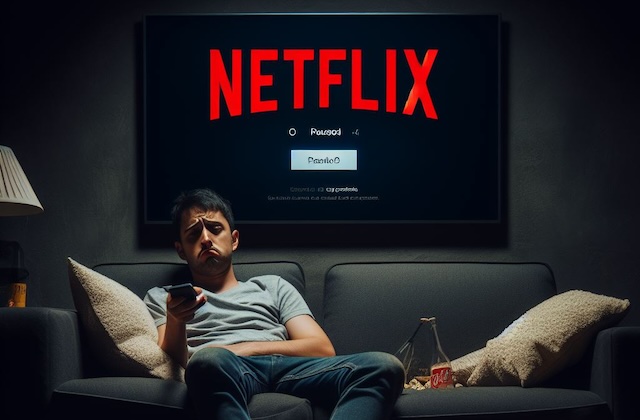
Disclaimer:
This post is a fictitious case study example created for educational and illustrative purposes only. Any references to any company, its products, or services are purely fictional and do not imply endorsement, affiliation, or association with the actual company.
Welcome to Day 29 of the PM series – Product Management in 30 Days!
Introduction
This case study delves into a pressing issue faced by Netflix users – Content Discovery. We’ll explore how Netflix, a streaming giant with a stellar reputation, addressed this problem and improved the user experience. From identifying the problem to implementing solutions, Let us take the journey through each crucial step.
Table of Contents
😵💫 The Foundation: Problem Statement
Problem Statement: Netflix, the leading global streaming service, faced a user navigation issue that significantly impacted the user experience. Subscribers struggled to find content that matched their preferences, leading to lower engagement and potential churn. Data revealed that a substantial portion of users abandoned the platform due to content discovery difficulties, highlighting the urgency of the problem.
🍎 Netflix – Company Information
➡️ Company Overview: Netflix, founded in 1997, has transformed the entertainment industry by providing a vast library of TV shows, movies, and original content to over 200 million subscribers worldwide. The company’s mission is to entertain the world, and its current product portfolio includes a wide range of content spanning various genres
⚔️ Competitors: Key competitors include Amazon Prime Video, Disney+, Hulu, and HBO Max
*️⃣ Market Size and Opportunity
🏪 Market Research: The streaming industry’s market size was poised for exponential growth. In recent years, it has witnessed a significant surge in both user adoption and revenue. As of 2027, the projected market size for the global streaming industry stood at an impressive $842.93 billion. This figure encompassed revenue generated from subscription-based streaming services, advertising, and content licensing.
🤑 Opportunity: The opportunity lay in enhancing the user experience by providing highly accurate content recommendations. By improving user satisfaction and retention, Netflix aimed to tap into this growing market while gaining a competitive edge.
User Persona
- Name: Sarah
- Characteristics: Sarah is a 30-year-old professional, a part of the “millennial” demographic, who enjoys binge-watching TV series in her limited free time. She values personalized content recommendations and seeks convenience.
- Needs: Sarah needs a content discovery experience that aligns with her taste, saving her time and effort.
- Goals: Her goal is to quickly find content that matches her preferences.
- Pain Points: Sarah experiences frustration when she spends more time searching for content than actually watching it. The generic content recommendations often miss the mark, leading to a sense of wasted time.
😁 User Journey – Happy Scenario
- Sarah logs into her Netflix account.
- She sees a tailored list of recommendations on her home screen.
- Excited to watch something new, she selects a movie from the list.
- The movie turns out to be a perfect fit, and she enjoys her evening.
🙁 User Journey – Unhappy Scenario
- Sarah logs into her Netflix account.
- The recommendations on her home screen seem unrelated to her taste.
- She spends several minutes scrolling through the content library.
- She chooses a movie, but it disappoints her, leading to frustration.
👨🔬 Possible Solutions
- Enhanced Personalization: Implement advanced machine learning algorithms to understand user preferences better and provide more accurate recommendations.
- Improved Content Tags: Enhance the tagging system to increase the granularity of content categorization.
- User Feedback Integration: Integrate user feedback mechanisms to allow users to rate recommendations and provide explicit feedback.
- Customized Genres: Allow users to create custom genres by combining genres and themes that match their interests.Social Recommendations: Enable users to see recommendations from friends or family.
🤷♂️ User Prioritization Frameworks

🏆 Success Metrics
- 15% reduction in user churn rate.
- 20% increase in average time spent on the platform.
- 10% growth in user satisfaction scores.
- 30% increase in content utilization rates.
🛍️ Go-To-Market Strategy
1️⃣ Product Development: Allocate resources to implement the solutions, with a focus on enhancing the recommendation system.
2️⃣ User Feedback Integration: Launch a feedback feature, encouraging users to rate recommendations and provide comments.
3️⃣ Testing and Optimization: A/B test the new features with a segment of users to validate improvements.
4️⃣ User Communication: Educate users about the new features through in-app messages and email campaigns.
5️⃣ Performance Tracking: Continuously monitor success metrics to ensure the desired impact is achieved
6️⃣ User Support: Enhance customer support capabilities to assist users with any issues or feedback.
By addressing the recommendation problem head-on, Netflix aimed to not only retain its user base but also harness the immense potential of the streaming industry. Through a data-driven approach, the company sought to elevate user satisfaction, boost content utilization, and secure its position in a highly competitive market.
🔔 Conclusion: Enhancing User Experience
The case of Netflix’s recommendation system transformation demonstrates the power of data-driven solutions to address user pain points and enhance business success. By focusing on user satisfaction, Netflix aimed to not only maintain its user base but also tap into the expanding streaming market. This case underscores the importance of understanding user needs, aligning with a company’s mission, and executing a comprehensive go-to-market strategy in product management.
As the product management landscape evolves, this case study serves as a reminder that innovation and user-centric solutions are at the heart of success in the digital era. Let’s continue the conversation in the comments below, sharing insights and experiences related to user satisfaction and product enhancement in the streaming industry.
If you arrived at this post via some link and want to learn more about product management, you can also find other posts. The Full series is available here
💌 Do drop me a comment below if you found the content useful and/or want me to write on a specific topic. This will make my day! 🙂
Also, share the post if you think this might help someone. The sharing link is at the top of the page.
Join FreeMentor as a student if you are a newbie in product management and want to have one Free 1:1 mentorship session.
MarketOpportunity #StreamingIndustry #DataDriven #UserExperience #UserRetention 📈🚀

